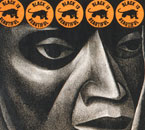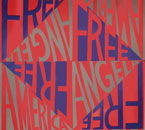This section examines the function of visual culture in the waning years of the modern movement. As local segregation laws were struck down in the 1960s and 1970s and African Americans were enjoying varying levels of enfranchisement across the nation, cultural figures—black and white—came to rethink the imagery of blackness. Their work not only reflected new views about race but also helped modify and improve old ones.
If mainstream popular culture continued to offer a partial, fragmentary, or distorted view of the black experience—a problem that continues today—it was the goal of imagery produced by and for African Americans to represent the full complexity and humanity of a people, to make visible what had remained mostly unseen in the culture at large.
During this period, the Black Arts Movement was born, organized exclusively by African American cultural figures and devoted to celebrating black life and culture. Independent African American cultural locales and institutions emerged, including theater companies, museums, and publishers. And black entertainers, producers, and directors advocated for a greater presence in Hollywood and for more complex and human characters.
Image Credits/Captions (Click on thumbnails for full image)
Elizabeth Catlett. Negro es Bello II, 1969.Lithograph on Paper. 30 x 23 1/3 in. Collection of Hampton University Museum, Hampton, VA. Elizabeth Catlett’s lithograph serves as a conceptual pendant to Garcia’s poster. It juxtaposes two mask-like faces with a grid of matching decals bearing the Black Panther logo and the words “Black is beautiful.” In both words and images, the work proclaims its resistance to a century and a half of white-identified popular culture designed to keep African-Americans in their place by insisting that they were not beautiful.
Faith Ringgold. America Free Angela, 1971. Offset lithography on paper. 30 x 20 in. Collection of the Artist
Rupert Garcia. No More o’ This Shit, 1969. Silkscreen on paper. 20 x 18 in. Courtesy of the artist, Rena Bransten Gallery, and the Corcoran Gallery of Art, Washington, DC. At first glance, this poster by the Chicano artist and activist Rupert Garcia brings to mind mid-twentieth-century icons of black servitude, characters that hovered in representational limbo between slavery and full equality. In Garcia’s hands, this character type is transformed into a symbol of defiance, self-determination, and resistance.


